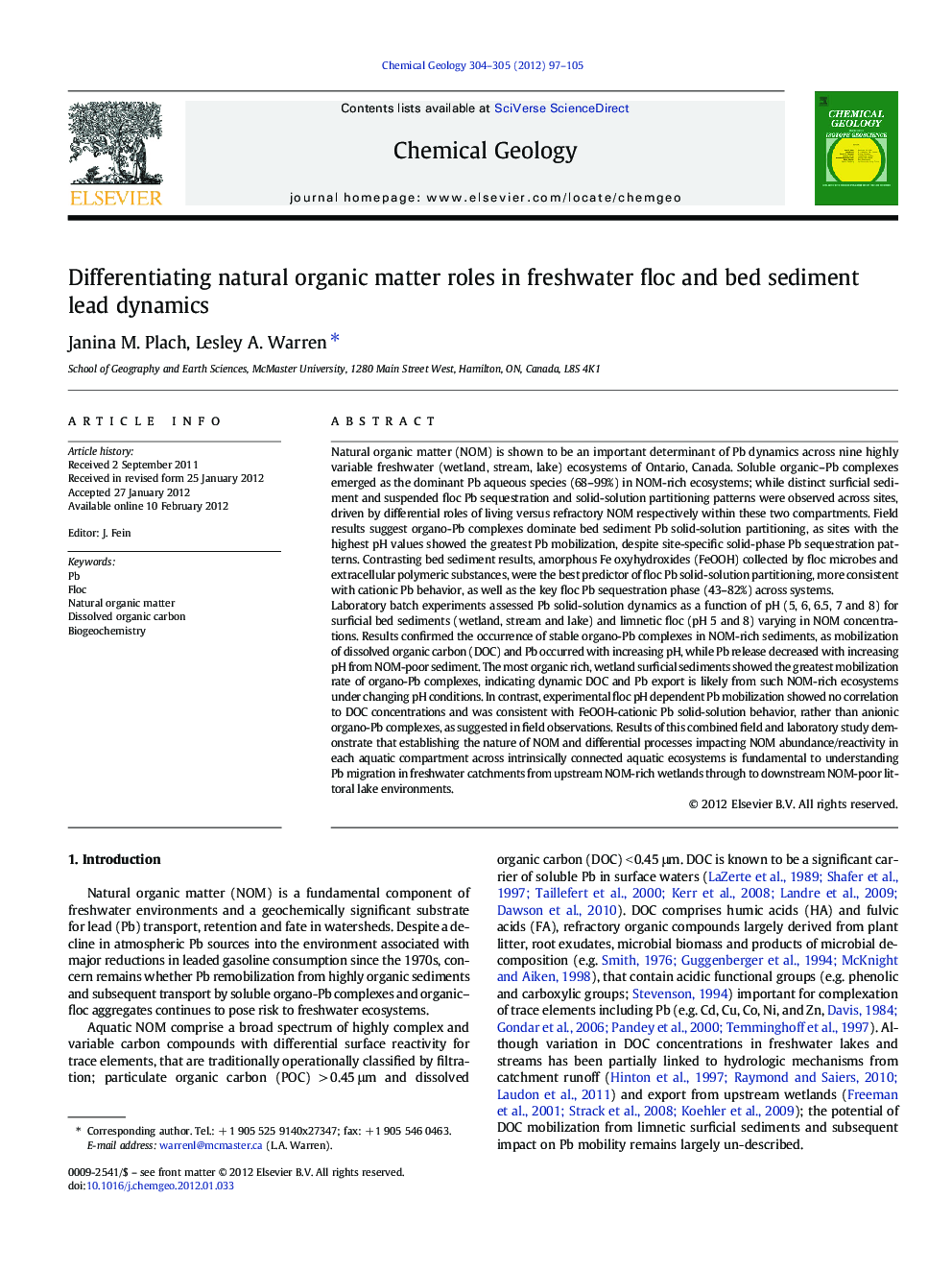| کد مقاله | کد نشریه | سال انتشار | مقاله انگلیسی | نسخه تمام متن |
|---|---|---|---|---|
| 4699461 | 1637648 | 2012 | 9 صفحه PDF | دانلود رایگان |

Natural organic matter (NOM) is shown to be an important determinant of Pb dynamics across nine highly variable freshwater (wetland, stream, lake) ecosystems of Ontario, Canada. Soluble organic–Pb complexes emerged as the dominant Pb aqueous species (68–99%) in NOM-rich ecosystems; while distinct surficial sediment and suspended floc Pb sequestration and solid-solution partitioning patterns were observed across sites, driven by differential roles of living versus refractory NOM respectively within these two compartments. Field results suggest organo-Pb complexes dominate bed sediment Pb solid-solution partitioning, as sites with the highest pH values showed the greatest Pb mobilization, despite site-specific solid-phase Pb sequestration patterns. Contrasting bed sediment results, amorphous Fe oxyhydroxides (FeOOH) collected by floc microbes and extracellular polymeric substances, were the best predictor of floc Pb solid-solution partitioning, more consistent with cationic Pb behavior, as well as the key floc Pb sequestration phase (43–82%) across systems.Laboratory batch experiments assessed Pb solid-solution dynamics as a function of pH (5, 6, 6.5, 7 and 8) for surficial bed sediments (wetland, stream and lake) and limnetic floc (pH 5 and 8) varying in NOM concentrations. Results confirmed the occurrence of stable organo-Pb complexes in NOM-rich sediments, as mobilization of dissolved organic carbon (DOC) and Pb occurred with increasing pH, while Pb release decreased with increasing pH from NOM-poor sediment. The most organic rich, wetland surficial sediments showed the greatest mobilization rate of organo-Pb complexes, indicating dynamic DOC and Pb export is likely from such NOM-rich ecosystems under changing pH conditions. In contrast, experimental floc pH dependent Pb mobilization showed no correlation to DOC concentrations and was consistent with FeOOH-cationic Pb solid-solution behavior, rather than anionic organo-Pb complexes, as suggested in field observations. Results of this combined field and laboratory study demonstrate that establishing the nature of NOM and differential processes impacting NOM abundance/reactivity in each aquatic compartment across intrinsically connected aquatic ecosystems is fundamental to understanding Pb migration in freshwater catchments from upstream NOM-rich wetlands through to downstream NOM-poor littoral lake environments.
Figure optionsDownload as PowerPoint slideHighlights
► NOM important determinant of Pb dynamics across wetland, stream and lake ecosystems.
► Floc amorphous Fe oxyhydroxides control suspended floc Pb sequestration.
► pH control on solid-solution partitioning of organo-Pb complexes from sediments.
Journal: Chemical Geology - Volumes 304–305, 18 April 2012, Pages 97–105